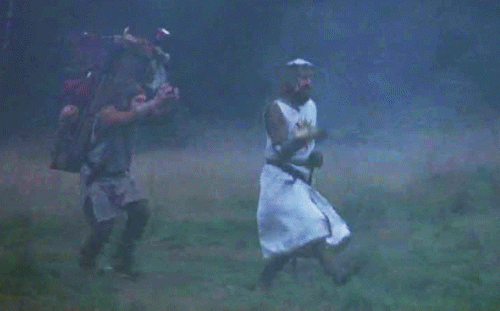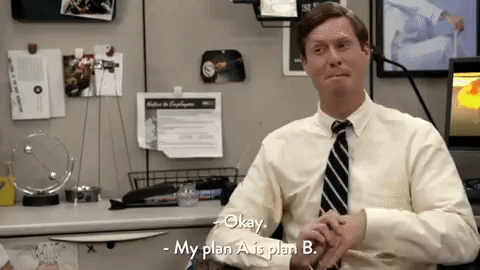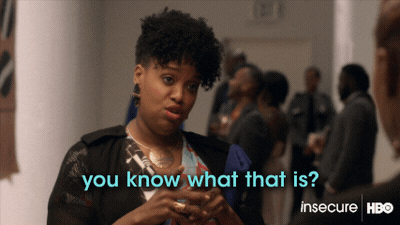Happy New Year! Even you Larry David acolytes out there, you’ll be out of your pain soon enough.
Last month, I described the call to action as the drawing of our bow. This month marks the first time we will release our bow based on how we synthesize and integrate the information we’ve gathered about how we and our teammates currently work. To refresh your memory or get started, find Issue #4 here.
Reminder: this experimentation style best serves small teams, regardless of whether they’re based on organizational charts, project teams, or other cohort styles. The two-pizza rule from Amazon is a good reference point. This rule was Jeff Bezos’ way of preventing meeting attendee lists from ballooning and keeping conversations on track.
We’ll stick with the two-pizza rule for our experimenting purposes but with a slightly more lenient interpretation. Teams of 6-10 will likely be the sweet spot for disrupting outdated work behaviors and developing innovative alternatives. However, this is still a viable approach for teams as small as two people and as big as fifteen. Small teams metabolize change more efficiently, which is essential for experimentation. Your priority should be to test an idea, learn, iterate, and continue moving forward.
This issue is named after the guiding philosophy—turned inside joke—of my dad’s backpacking group. It’s based on the group knowing where they’ll camp overnight during their backpacking journeys, having a plan for how they’ll trek there, and also having knowledge of backup plans for if/when surprises greet them on the trail. Whether the surprises are thanks to weather forecasts, trail conditions, other forest dwellers, or good ol’ human error, the group is able to take things in stride and adapt.
This credo has since become a staple of my family’s lexicon. It’s endlessly versatile, both as a phrase and an operating model. Still, I was caught off guard when I began to notice commonalities between a group of men in their sixties who like to hike together a handful of times each year with, known perfectionist and superstar, Beyoncé.
While I was—tragically—not among the silver-clad people at The Renaissance Tour last summer, I got to see the documentary in December. Throughout the film, Beyoncé reflects on how her work ethic has allowed her to be the performer that we’ve come to know. Her dedication and commitment to excellence has always set the bar high for herself and her collaborators, with her ultimate goal being absolute presence in the moment when she and her team are in the midst of a performance.
Coincidence or not, 2023 marked the 10th anniversary of her first visual album, embodying Malcolm Gladwell’s Outlier theory that it takes 10,000 hours (or ten years) to reach mastery. It seems that Beyoncé’s renaissance is much more than just the title of her latest album; she is in a new state of flow and is clearly having a blast with it. After her 10,000 hours of mastery, she can see which behaviors that got her to where she is now are not needed for the journey ahead. She now knows what she can set down without compromising her craft so to make room for more freedom, creativity, and pure fun, bringing justice and liberation to perfectionists and Virgos everywhere.
Although most of us mortals will likely never be in a position to convince thousands of concert and moviegoers to buy silver outfits for one night only, Beyoncé does, in fact, bring us back to loose frameworks and what’s possible when we use them in our work.
18th century Scottish poet Richard Burns said it best: the best laid plans of mice and men often go awry. Plans can be rigid and brittle, which means they break under pressure. Plans, unintentionally or not, also assume certain things to remain constant and static, rendering many plans inapplicable and unhelpful.
Loose frameworks are the antidote to plans. Not because they’re carefree or unstructured, but because they’re flexible and dynamic. They’re mindful of context and variables and offer directions in lieu of instructions, toeing the line between precision and prescription. As conditions change, so, too, must our approach.
To call back to Malcolm Gladwell’s Outliers theory, he wrote: achievement is talent plus preparation. Aptitude and ability combined with adaptability is the triple-threat that loose frameworks draw upon, similar to the gardener mentality featured in Issue #2. In a scene of the Renaissance documentary, the entire stage setup goes dark mid-performance and neither Beyoncé nor her team are panicked. Certainly no one planned for or was anticipating a power outage, but they know how to respond all the same. Unruffled, Beyoncé has the idea for an unplanned costume change to rev up the crowd when she returns to the stage (it works).
A costume change might seem trivial, but the mental clarity and agility to come up with a response on the fly is not.
Loose frameworks - and those who rely on them - accept the inherent twists and turns of life (and therefore, work), knowing that we will learn and adapt as we go. It’s up to us for the framework to start on a foundation of shared understanding of what works and what doesn’t, and clarity on what we’re experimenting with and why. Even, as it turns out, when we are Beyoncé.
Granted, our ambitions are likely more modest than one of the world’s greatest performing artists and more indoorsy than those of my dad’s backpacking group. Still, we’re all in pursuit of the same thing: quality outputs to our efforts.
This brings us to our task for this month. The task for this month is three-pronged. Next month’s will be easier, I promise.
Prong #1: As a team, consolidate your responses to last month’s task of taking inventory of how work currently gets done, plus current contributors and detractors.
What activities are common amongst all of you?
What are the common helpers?
What are the common detractors?
What are the common things missing?
This is your foundation of shared understanding and the basis upon which you will begin your experimenting together. What you negotiate and agree upon with one another here will be anchor for why you decide to change certain things and leave others be. Alignment is essential, which is why I stress the importance of experimenting with small teams. Decision-by-consensus with too many cooks in the kitchen is, decidedly, not fun and unproductive.
It’s important to remember and accept that this is not an exercise for you or other teammates to persuade or force to your way of thinking. You will not agree on everything, that’s not the point of the exercise.
Prong #2 is simple: identify one (just one!) common detractor that you can experiment a new approach with.
Maybe it’s deciding, as a group, to prioritize collaborative and synchronous work when you’re in the office together and allow for asynchronous work to happen wherever and whenever it works for the individual contributor. Maybe it’s adopting Dropbox’s meeting framework to have more effective meetings. Maybe it’s aligning on what modes of communication you use for online and offline hours.
The only wrong choice is choosing a change that’s too big or too vague. If you’re unsure if the change you and your team have selected is too big, consider the actions attached to it. If there are independent or unconnected actions within the change, chose which to tackle first and set the other aside for now. Always aim to change the lowest common denominator.
Prong #3 is similar to #1 in that it asks for you and your team to expand on your common language.
You must create a mutual understanding of how to track progress. While people are most familiar with the S.M.A.R.T goal approach to help measure success, I prefer P.A.C.T. for it’s focus on outputs (e.g. behaviors) in lieu of outcomes (e.g. results) for experimentation purposes. With the help of the P.A.C.T. approach, we will understand our success on a month-to-month basis and unearth upcoming common denominator changes that will help you and your team evolve into whatever your Renaissance Tour equivalent might be.
Pace yourselves! Starting (slowly!) from wherever you currently are, as a team, is better than not starting at all. I’m excited for what you’ll learn together.
Until next month! ✌🏼
Paid Subscribers, I’ll be back next week with the Experimentation Dashboard you and your teams can use to get started.












